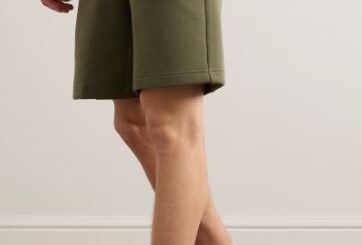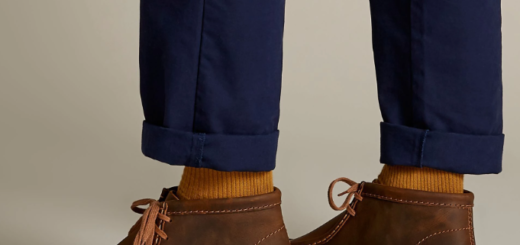Why the Classic T-Shirt Deserves Attention
Among all the garments in your wardrobe, few pieces are as essential—or as versatile—as the humble t-shirt. Its simplicity is its greatest strength, working just as well on its own with jeans as it does layered under a blazer. Whether you’re heading to a casual lunch, dressing down for work, or creating a smart-casual ensemble, a well-fitting tee can be the foundation of a great look. With fashion norms becoming more relaxed, it’s no longer surprising to see someone confidently sporting a t-shirt under a suit jacket in a professional setting.
But for this staple to truly shine, the fit has to be right. The difference between a flattering t-shirt and one that throws off your proportions comes down to a few specific details. Let’s take a closer look at what you should keep in mind when choosing the perfect tee.

Choosing the Right Neckline
T-shirts generally come with two main neckline types: the crewneck and the v-neck. While both have their place, the crewneck remains the most versatile choice for everyday wear. It offers a timeless silhouette that complements most body types and outfit combinations.
Crewnecks sit higher on the neck and create a neat frame for your face, usually ending just above the collarbone. They’re great for standalone wear or layered beneath jackets and overshirts. V-necks, by contrast, expose more of the chest and work better in layered situations where you want to keep the neckline discreet—such as beneath a sweater or cardigan.
Getting the Shoulder Fit Right
The quickest way to determine whether a t-shirt fits properly is to check how it sits on your shoulders. The seams where the sleeves attach should align precisely with the point where your shoulder curves into your arm.
If the seam extends past that point and begins to sag down your arm, the shirt is too large and may make your frame appear slouchy or disproportionate. If the seam is too far inward, sitting near your neck or upper trapezius, then the shirt is too tight and may restrict movement.
A properly placed shoulder seam ensures the t-shirt flatters your natural shape and maintains a clean, structured look.
Understanding Sleeve Length and Fit
Sleeves play a bigger role in how a t-shirt looks than you might expect. Ideally, the sleeve should end around the midpoint of your upper arm, hitting between your shoulder and elbow. This length is flattering for most physiques, offering a balanced silhouette.
If the sleeves are too short and ride up too high on the arm, the shirt can look awkward or even too small. On the other hand, if the sleeves drop closer to the elbow, the overall appearance becomes sloppy, and your proportions may appear off.
Look for sleeves that provide a bit of room without flaring out, especially if you prefer a tailored or athletic look.
The Body Fit: Neither Clingy Nor Boxy
When it comes to how a t-shirt fits across your torso, balance is key. The shirt should gently skim your body without clinging to it. You want enough room to move comfortably but not so much fabric that it appears loose or billowy.
Avoid anything that hugs your midsection like a compression shirt—those are better reserved for the gym. Likewise, steer clear of overly baggy styles that can exaggerate your waist or make you appear wider than you are. The ideal fit will create a streamlined silhouette that flatters your natural shape.
T-Shirt Length Matters
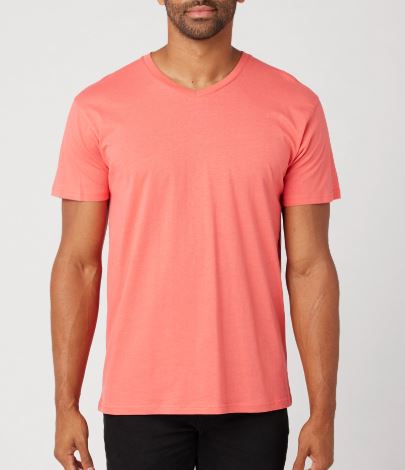
A great-fitting t-shirt should fall somewhere between your beltline and the mid-point of your crotch. This length ensures your proportions stay balanced and the shirt doesn’t interfere with your body’s natural lines.
Shirts that are too short and end right at the waistline can look juvenile or like they’ve shrunk in the wash. Conversely, if your tee drops well past your hips, it will visually shorten your legs and create an unflattering, elongated torso.
A good rule of thumb: your shirt should fully cover your waistband without extending much farther. That sweet spot in the middle gives the most polished, proportional look.
Don’t Obsess—Just Aim for Close Enough
While it’s great to know what the ideal t-shirt fit looks like, perfection isn’t necessary for everyday wear. Many people get overly caught up in the tiny details—worrying whether a sleeve ends exactly halfway down the bicep or if the hem hits the exact center of the thigh. But fit doesn’t have to be that precise to work well.
The important thing is to avoid extremes. If your t-shirt is reasonably close to the ideal in the shoulders, torso, and length, you’re in great shape. As long as your shirt isn’t skin-tight or comically oversized, you’re well on your way to looking sharp.
Final Thoughts
T-shirts may seem like the most basic item in your closet, but when worn with attention to fit, they can become one of the most powerful. Whether you’re dressing it up or keeping it casual, a properly fitted t-shirt enhances your look effortlessly. Take a few minutes to check how your shirts fit in the collar, shoulders, sleeves, body, and length—you’ll notice a major difference in how you look and feel.
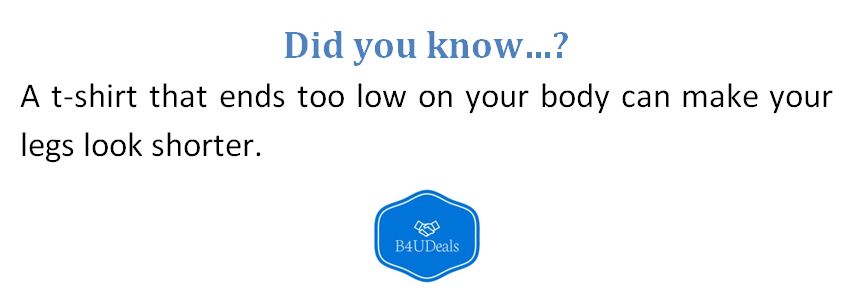
FAQs
Why is the t-shirt considered a wardrobe essential?
Because it’s timeless, versatile, and can be dressed up or down effortlessly.
Can you wear a t-shirt in professional settings?
Yes, modern dress codes allow t-shirts under blazers or suits in many workplaces.
What is the most versatile t-shirt neckline?
The crewneck is the most classic and adaptable for different outfits and occasions.
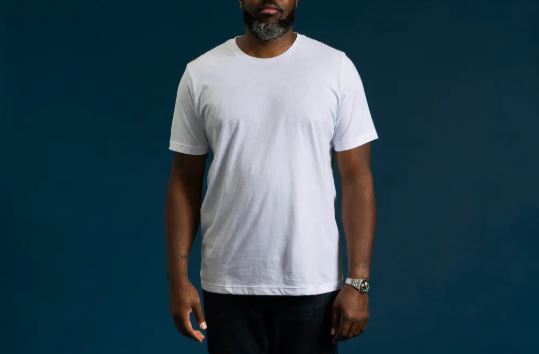
When should you choose a v-neck over a crewneck?
V-necks are best when layering under sweaters to keep the neckline hidden.
How should the shoulder seams of a t-shirt fit?
They should align perfectly with the edge of your shoulder for proper fit and proportion.
What does it mean if the shoulder seam is too far down your arm?
It indicates the shirt is too large and may make your frame look droopy.
Where should t-shirt sleeves end for ideal appearance?
Midway down your upper arm, between the shoulder and elbow, for a balanced look.
What’s wrong with sleeves that reach the elbow?
They make the shirt appear oversized and can distort your upper body proportions.
How should a t-shirt fit across the body?
It should skim your torso without clinging or hanging loosely, offering a clean silhouette.
What happens if a t-shirt is too tight?
It looks like an undershirt and may highlight areas unintentionally, reducing comfort and style.
What’s the ideal length for a t-shirt?
It should fall between your waistband and mid-crotch, covering the belt area comfortably.
Do you need a perfect fit to look stylish?
No, just avoid extremes—aim for a close, flattering fit without overanalyzing small details.
Did You Know?
- The placement of your t-shirt’s shoulder seams can instantly reveal if it fits correctly.
- Crewneck t-shirts are more versatile than v-necks and suit most face shapes and outfits.

